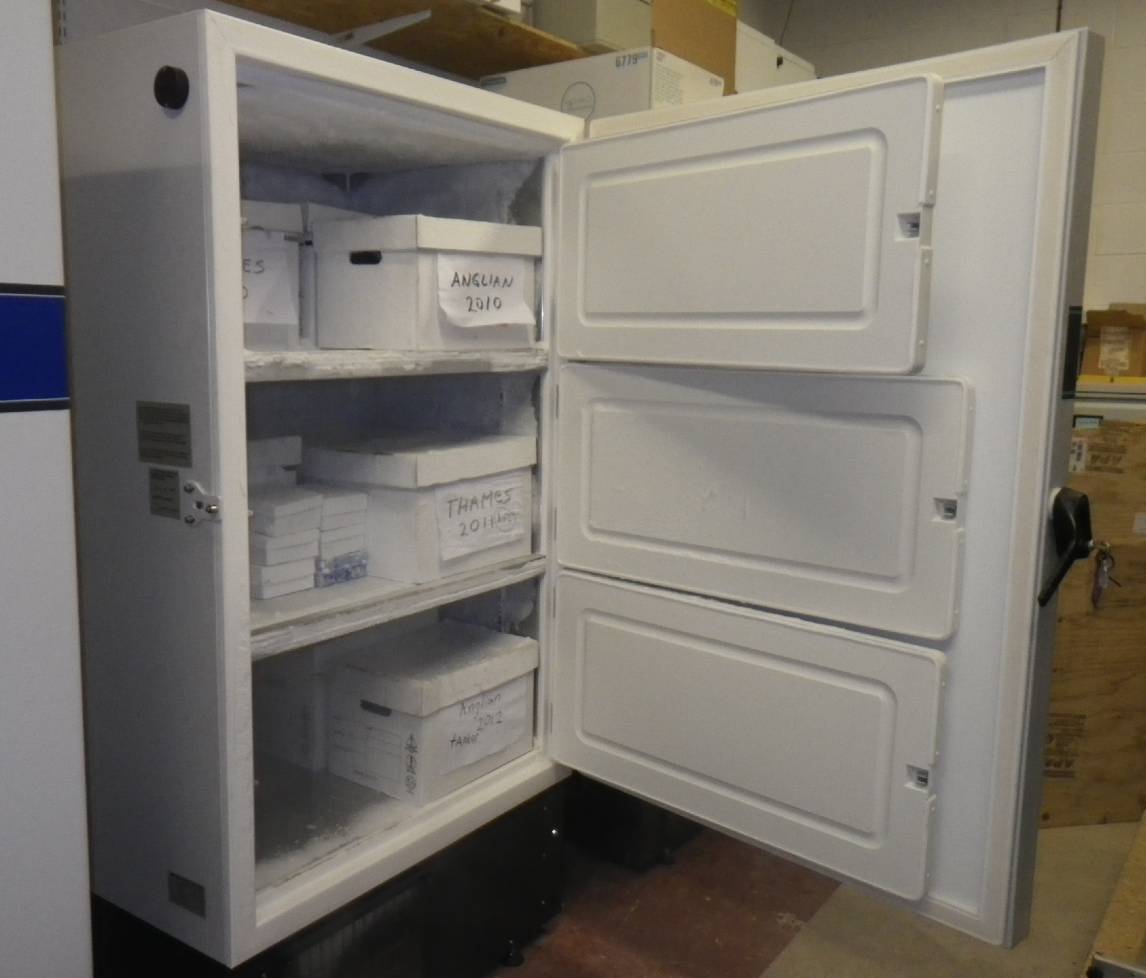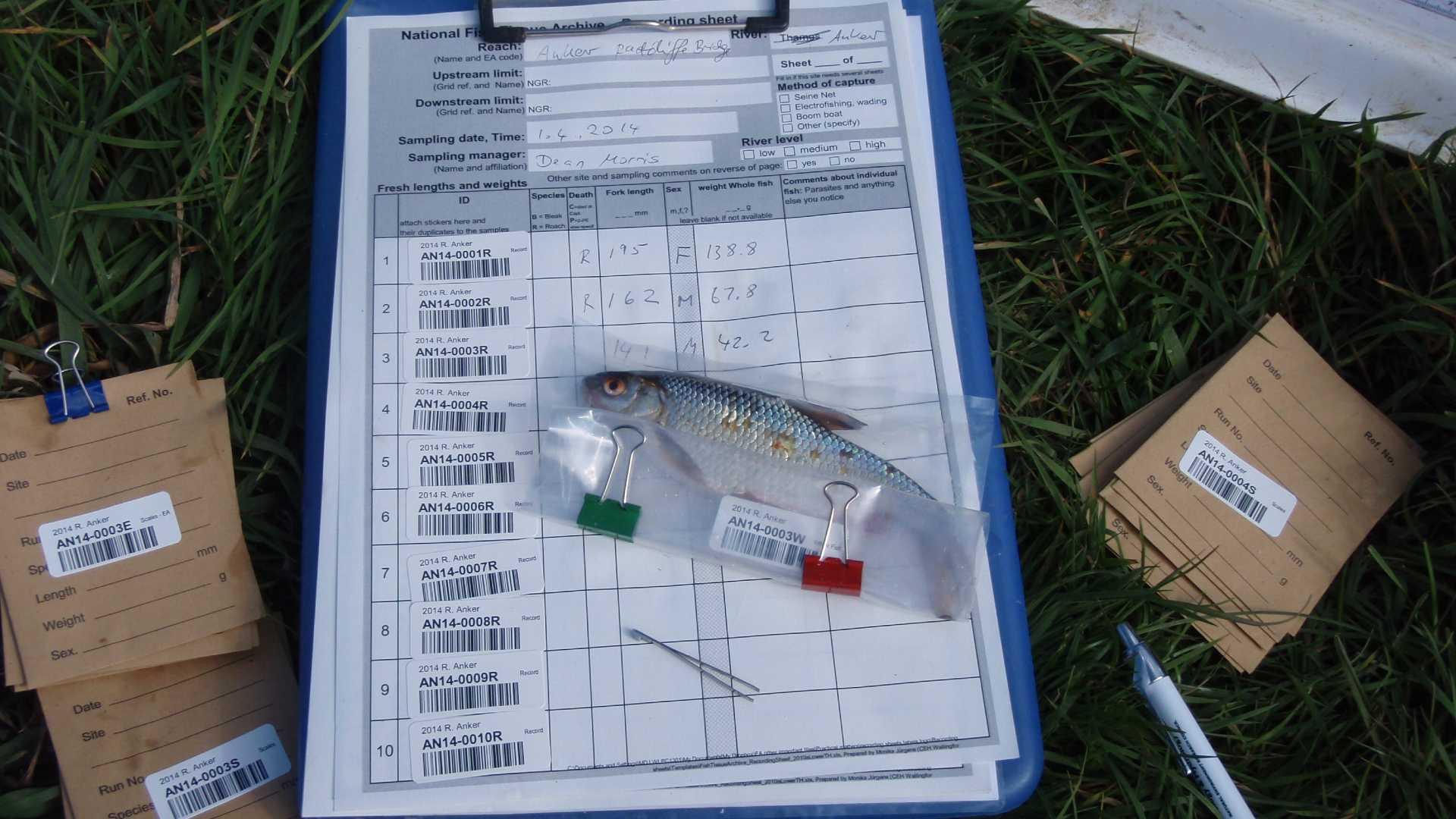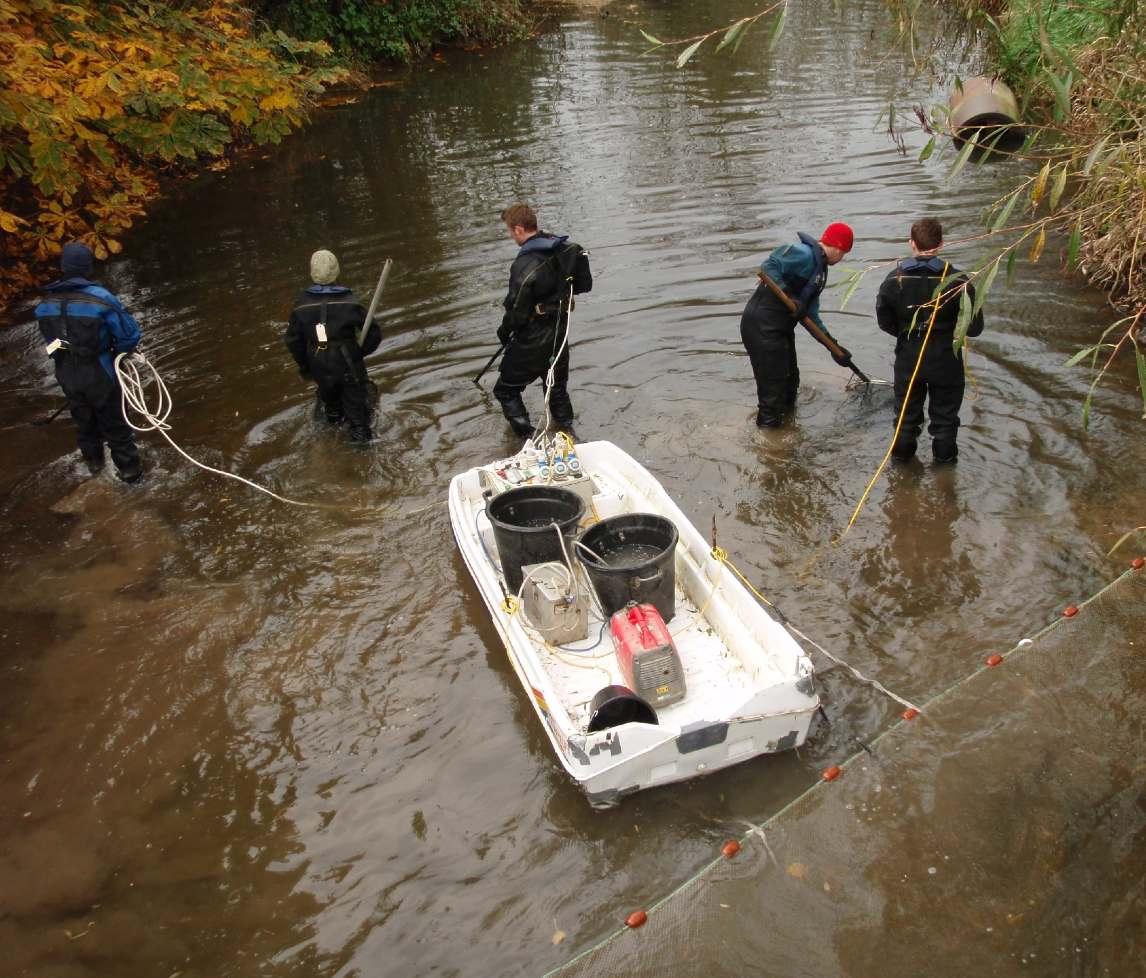Science challenge
Our ability to assess what is happening in the environment is often hampered by a lack of information about past conditions. Storing fish tissue samples for the future allows today's samples to be analysed in the context of tomorrow's methods and questions. This will enable us to determine temporal and spatial trends in chemical pollution of English rivers.

Project summary
The National Fish Tissue Archive is a joint initiative by the UK Centre for Ecology & Hydrology, Lancaster Environment Centre at Lancaster University and the Environment Agency. The main purpose of the Fish Tissue Archive is to enable chemical contamination in English rivers to be assessed. Fish collected in the field by the Environment Agency are frozen on site. They are then either stored whole or homogenized in their frozen state and divided into sub-samples back in the laboratory. All samples are stored at -80°C as a resource for retrospective monitoring. Data about the stored samples along with the results of any analysis carried out are stored in a database. The reasons for collecting fish rather than water samples include:
- They integrate what is present in the water/food web over time, which is more revealing than occasional water samples
- Biomagnification and bioconcentration lead to increased concentrations of many chemicals in the fish compared to water, allowing for smaller samples to be stored
- Uptake is a prerequisite for potential effects on wildlife. The concentration of a chemical in tissue is a more meaningful measure of exposure than water concentration
- The Environment Agency already catches fish on an annual basis at many river sites in order to monitor their species, numbers, and sizes. The Agency is therefore an ideal partner allowing sample collection with little additional effort.

